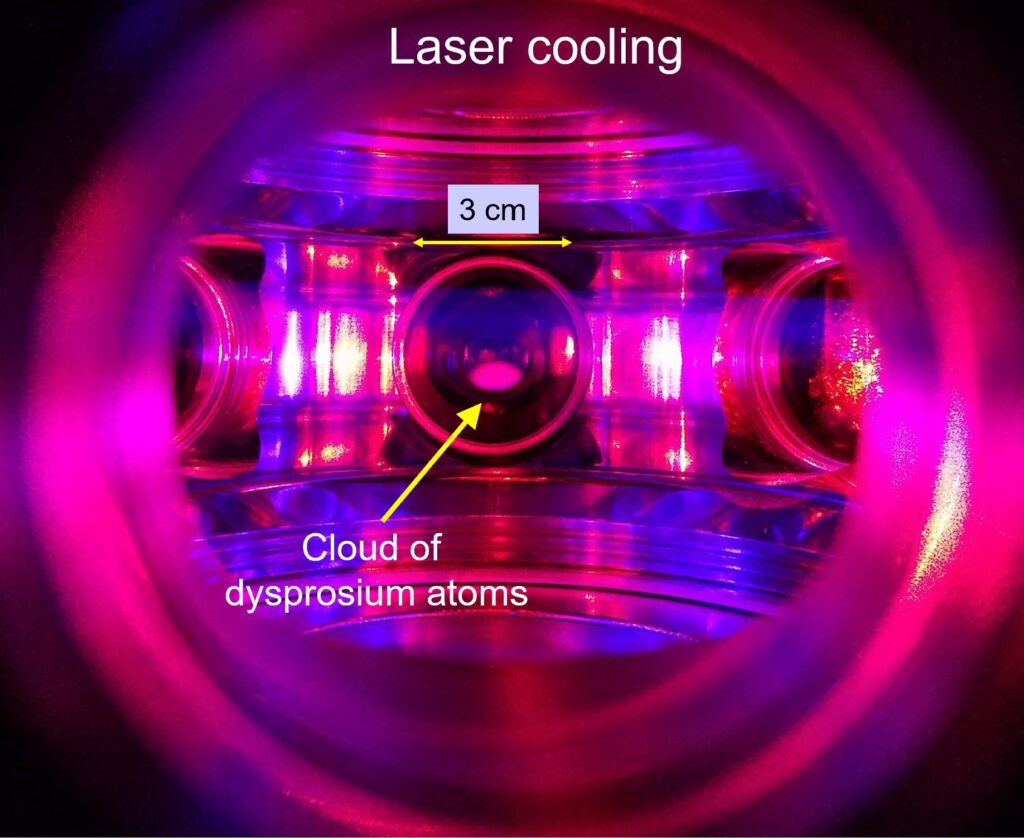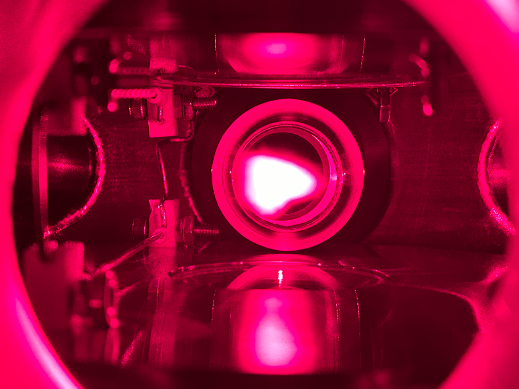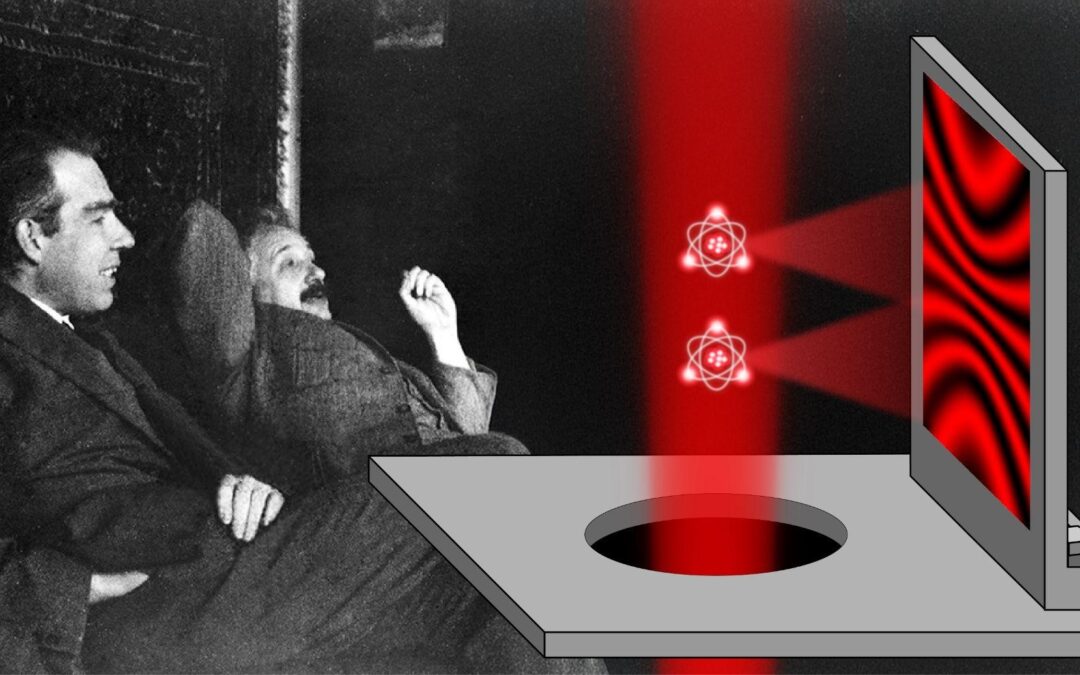Quantum mechanics tells us that all physical objects are simultaneously particles and waves. However, the Heisenberg uncertainty relation states that it is not possible to observe both aspects simultaneously. This principle is illustrated by the famous double-slit experiment where photons (particles of light) pass through two slits and form an interference pattern on a faraway screen. The interference implies that each particle has passed through both slits — that’s what waves do. However, detecting which slit the photon has passed through will destroy the pattern. The double-slit experiment highlights one of the pillars of quantum mechanics. In fact, the famous physicist Richard Feynman wrote that the double-slit experiment is “a phenomenon which is impossible, absolutely impossible, to explain in any classical way, and which has in it the heart of quantum mechanics. In reality, it contains the only mystery.”
Over the decades, physicists have performed double-slit experiments in numerous ways. Now, a group at MIT has taken this experiment to its most idealized version: The slits are formed by single atoms at close to absolute zero temperature, floating in a vacuum chamber and scattering single photons. “Einstein and Bohr would have never thought that this is possible: to perform such an experiment with single atoms and single photons”, says Wolfgang Ketterle, the John D. MacArthur Professor of Physics and leader of the MIT team. “What we have done is an idealized Gedanken experiment.”
In their paper, which was published in Physical Review Letters on 7/22/2026 (https://journals.aps.org/prl/abstract/10.1103/zwhd-1k2t), the MIT team studied the case where half of the photons provide particle information, and the other half provide wave information. “This is the sweet spot”, comments postdoctoral associate Vitaly Fedoseev, the first author on the paper which appeared today in the prestigious journal Physical Review Letters. “Here, we can exactly understand how a single atom measures the path of the photon: The photon imparts a small momentum to the atom. However, the atom necessarily has a momentum uncertainty due to the Heisenberg uncertainty principle. Therefore, there is only a partial probability that we can detect the momentum transfer from the photon.”
The researchers also investigated the role of spatial uncertainty of each atom. When they increased the spatial extent of the atom, they observed a reduction in the interference contrast — the delocalized atom now provided a higher probability for detecting the path of the photon, diminishing the wave character. This was the crux of the debate between Einstein and Bohr in 1927, in which Bohr correctly argued that both particle and wave properties of an object could not be measured at the same time.
One critical finding of the MIT experiment was that atoms held in place with laser beams (analogous to a screen with a slit held by springs, see figure) behaved the same way as atoms floating freely in space. This addressed a widespread misconception in the field about the roles of the “springs” which hold the slits in space.
The MIT results were based on two innovations. Instead of observing the interference pattern of light scattered off two atoms, the experiment used more than 10,000 atoms arranged in an almost perfect periodic array (like a crystal) using multiple standing waves of light (called an optical lattice). This greatly enhanced the signal. Furthermore, the atoms came from a Bose-Einstein condensate, the coldest form of matter ever produced. This meant each atomic “slit” was identical and precisely prepared in an uncertainty-limited wave packet. The second innovation was that the MIT experiment focused on the non-interfering incoherent light which was harder to quantify in previous experiments. It is this incoherent light which carries the information about which slit the light has gone through.
Even with 10,000 atoms, the observed light signal was very small. “In every experimental cycle, we observed only five to ten photons, which pushed even our highly sensitive camera to its limit”, says graduate student Hanzhen Lin. “We could take data only by shielding our camera from every light source in the lab.”
The year 2025 has been declared by the United Nations as the International Year of Quantum Science and Technology, celebrating the formulation of quantum mechanics 100 years ago. The famous discussion between Bohr and Einstein about the double-slit experiment took place only two years later. “It’s a wonderful coincidence that we could help clarify this historic controversy in the same year we celebrate quantum physics”, says graduate student Yoo Kyung Lee.
Ketterle is excited about possible future work: “Our results show that we can explore the quantum properties of single atoms in an array of 10,000 atoms. This allows us to observe phenomena not studied before.”
Other coauthors are physics graduate students Yu-Kun Lu and Jiahao Lyu. All authors are affiliated with the Department of Physics, the Research Laboratory of Electronics, and the MIT-Harvard Center for Ultracold Atoms. The work was funded by the NSF, DoD and the Moore Foundation.
Technical note: The MIT experiment was done with a so-called Mott insulator of atoms arranged as a regular three-dimensional crystal in an optical lattice (created with a three-dimensional standing wave pattern of multiple laser beams). The MIT team studied both dysprosium atoms and lithium atoms. Coherently scattered light interferes destructively, whereas incoherent light does not. The incoherent light excites oscillations of the scattering atom and leaves which-way information. After the optical lattice is switched off and the atoms have expanded, the destructive interference disappears, and a reference light scattering signal is obtained via incoherent Rayleigh scattering. The fraction of incoherent light is determined by normalizing the incoherent signal via the Rayleigh scattering signal and represents the probability to obtain which-way information when an atom scatters light. In this way, light scattering off a Mott insulator of 10,000 atoms provides the same information as an experiment with only two atoms, but with a much larger signal.
Photos and graphics
Figure 1: Schematic of the double-slit experiment. The top figure shows the standard setup with a light source (shown as a collimating slit), the double slit and the screen with the interference pattern. Bottom left: Drawing by Niels Bohr illustrating his debate with Einstein. It shows a slit for light which is movable and can detect the passage of single photons. Photons passing through the slit will transfer momentum which leads to a displacement of the slit. However, a slit is sensitive to single photons only when it consists of a single atom, as realized in the MIT experiment. Bottom right: Schematic of the MIT experiment: Two single atoms floating in a vacuum chamber are illuminated by a laser beam and act as the two slits. The interference of the scattered light is recorded with a highly sensitive camera depicted as a screen. Incoherent light appears as background and implies that the photon has acted as a particle passing only through one slit.
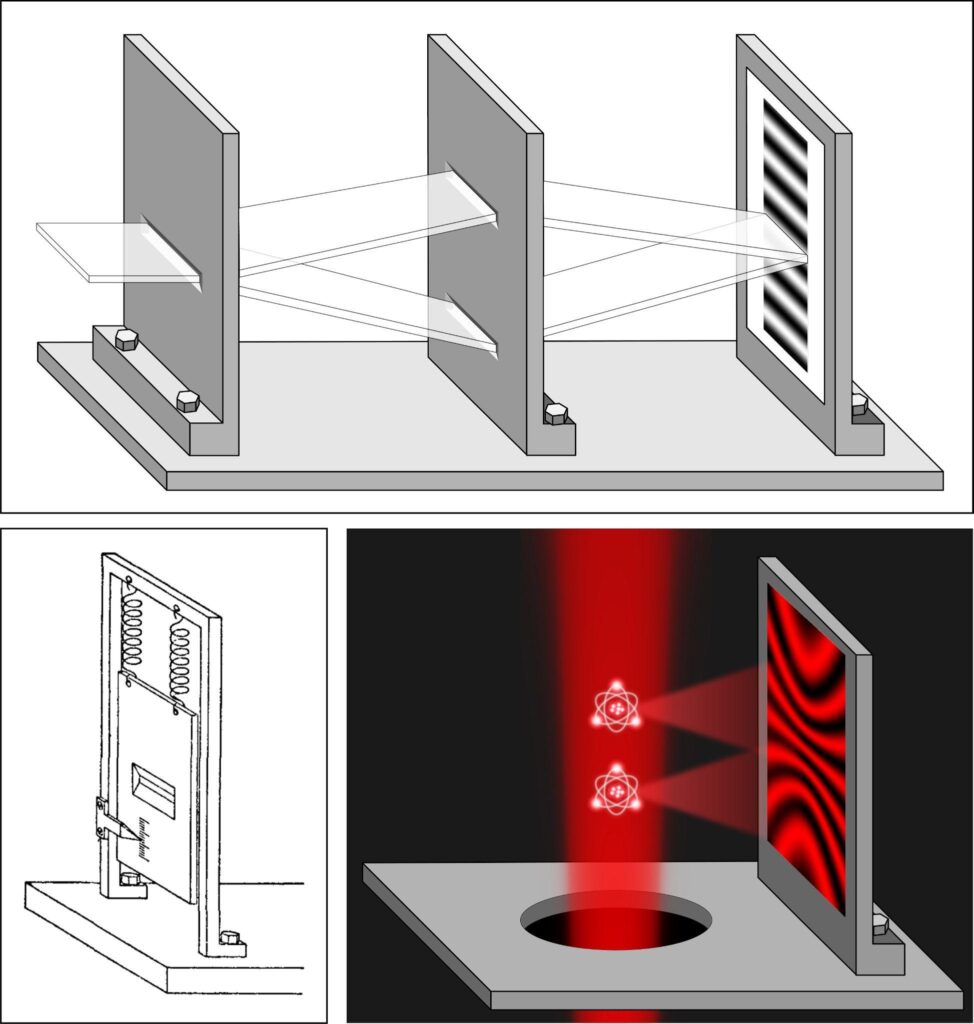
Figure 2: Einstein and Bohr (left) discussed in 1927, how precisely one could measure the path of a photon through a double-slit and still observe interference. The graphic shows the scheme of the new MIT experiment: Two single atoms floating in a vacuum chamber are illuminated by a laser beam and act as the two slits which illuminate the screen to the right.
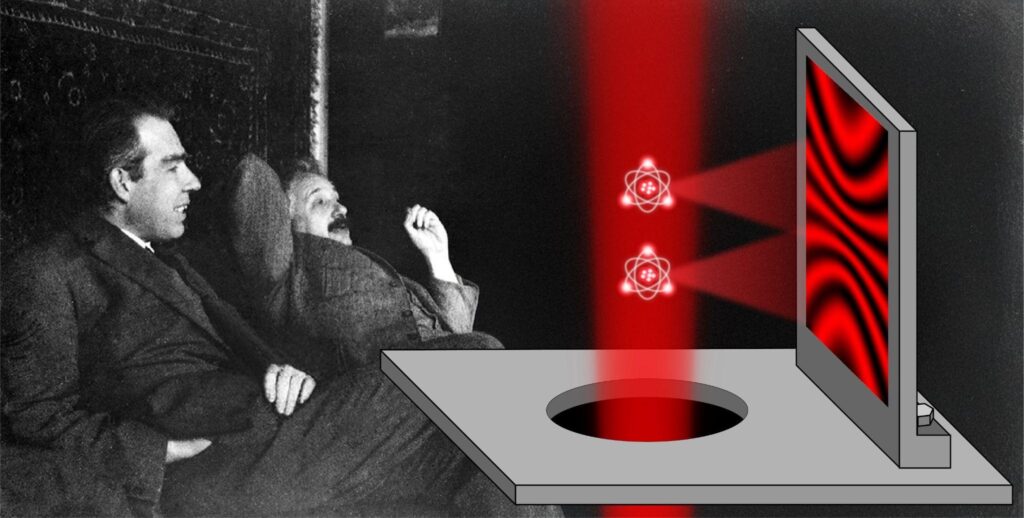
Figure 3: Same as Figure 1, but in a more modern style.
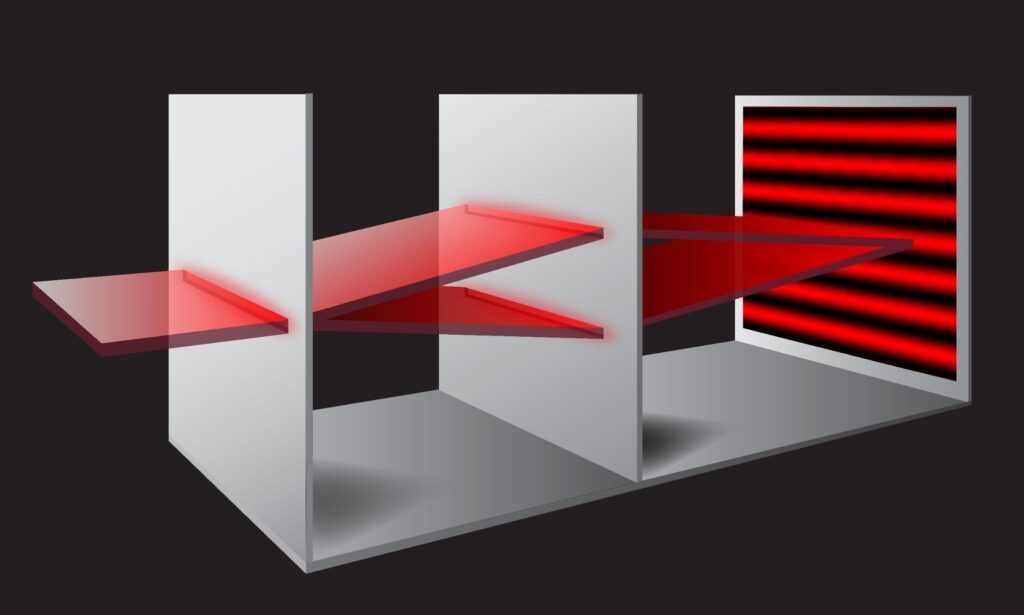
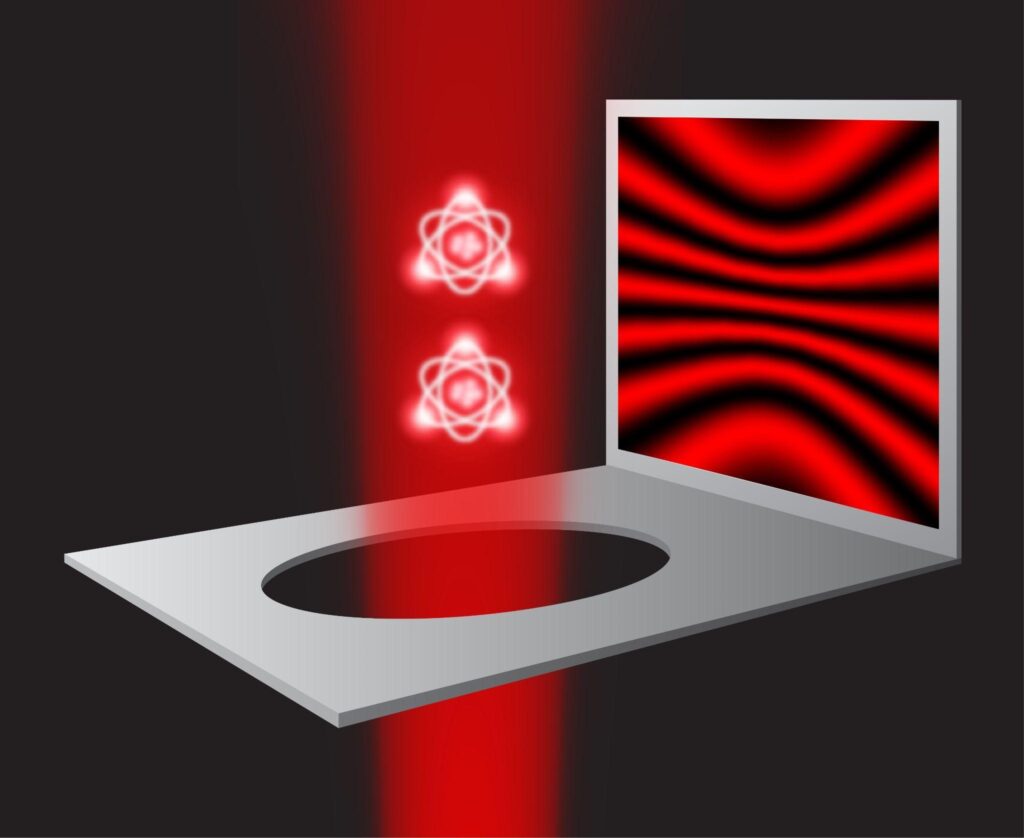
Figure 4: The MIT team behind the dysprosium machine. Front: Yoo Kyung Lee and Hanzhen Lin. Back: Jiahao Lyu, Yu-Kun Lu, Wolfgang Ketterle and Vitaly Fedoseev.
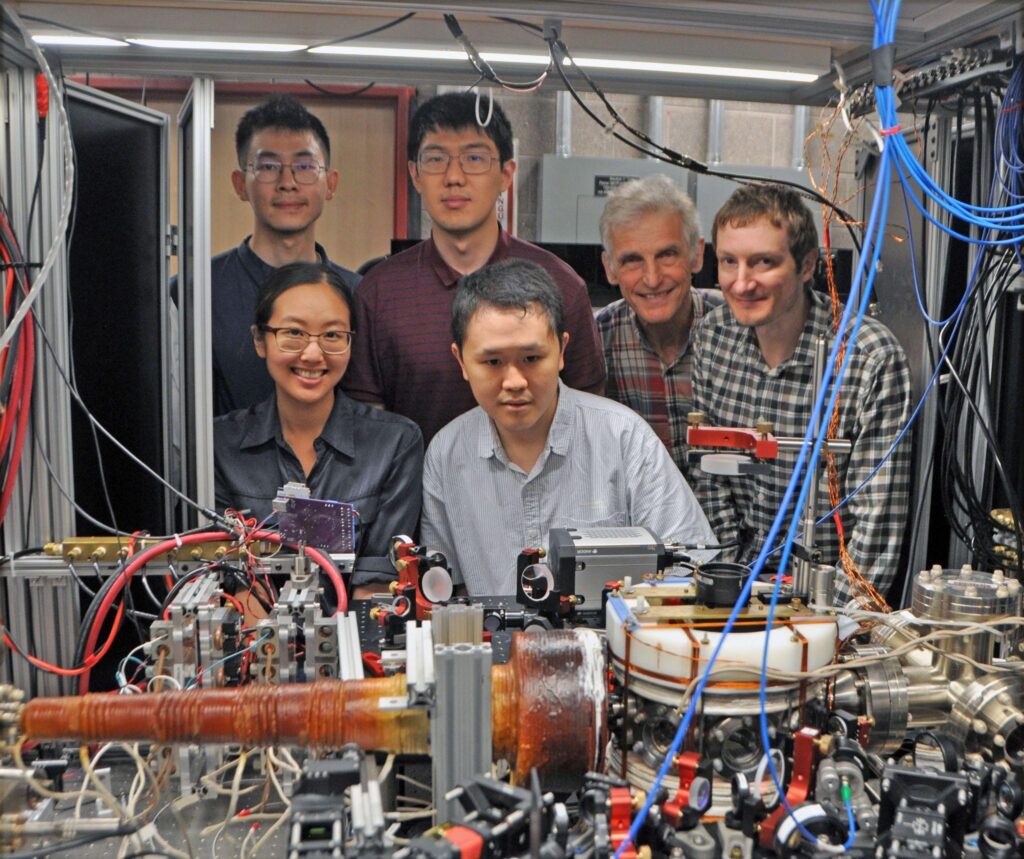
Figure 5: Yoo Kyung Lee, Hanzhen Lin, Yu-Kun Lu and Vitaly Fedoseev inspect the machine to study ultracold lithium atoms.
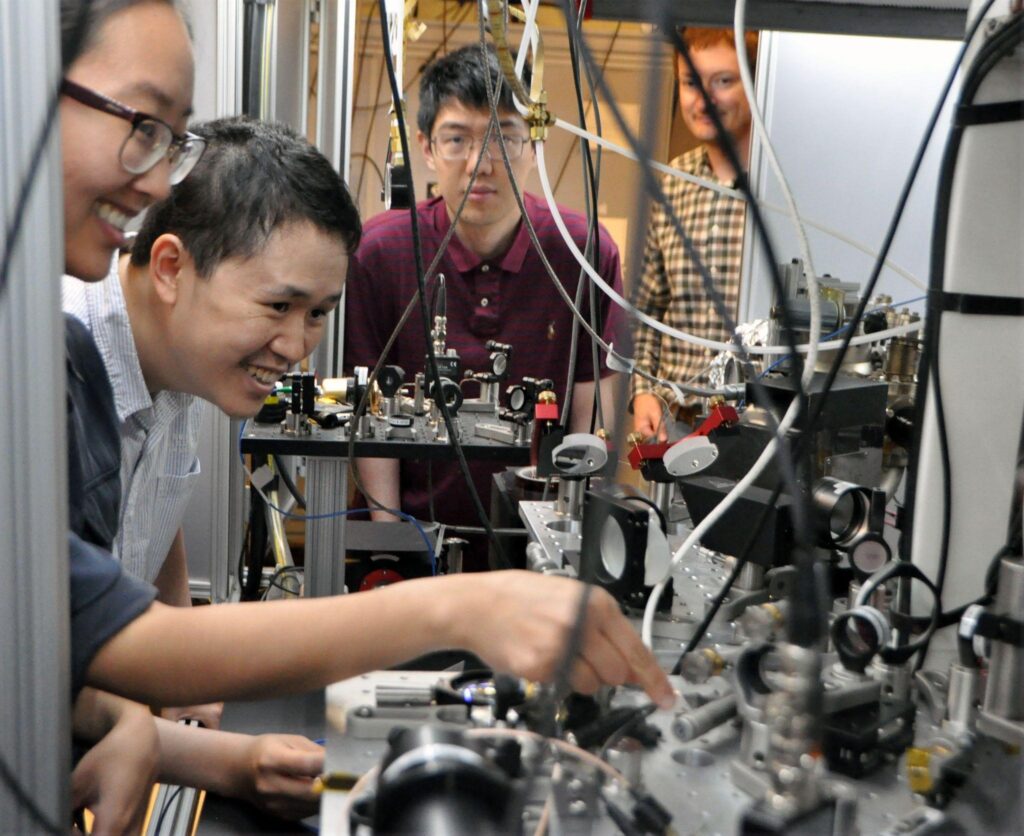
Figure 6: Jiahao Lyu and Yu-Kun Lu and the experimental setup to study ultracold dysprosium atoms.
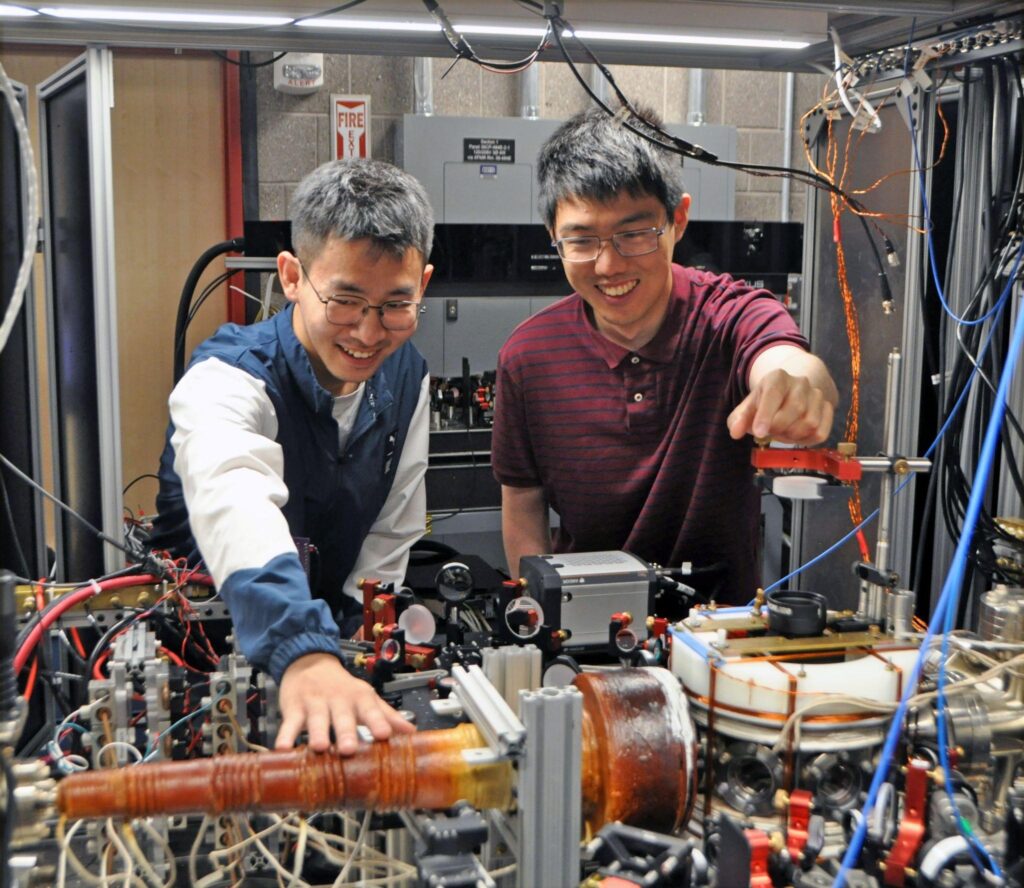
Figure 7: Hanzhen Lin adjusting optics for the lithium experiment.
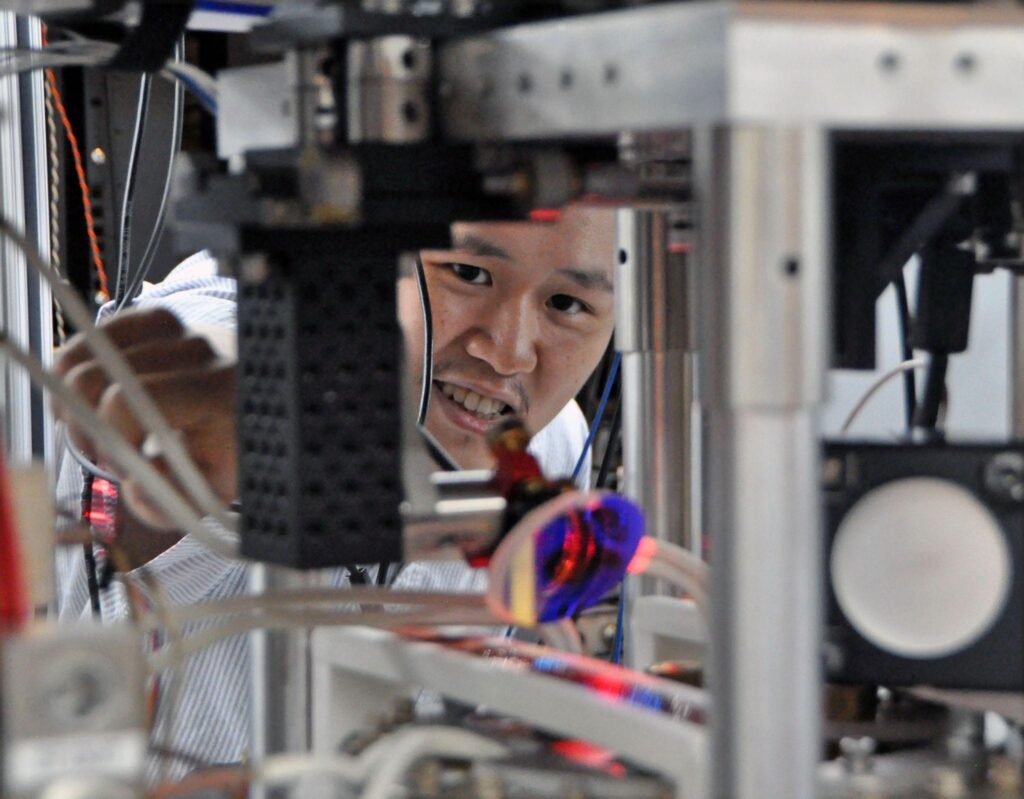
Figure 8: Laser cooling of ultracold dysprosium atoms (top) and lithium atoms (bottom). The atoms are cooled by laser light in the center of the vacuum chamber. The atoms “glow” because they scatter photons.
